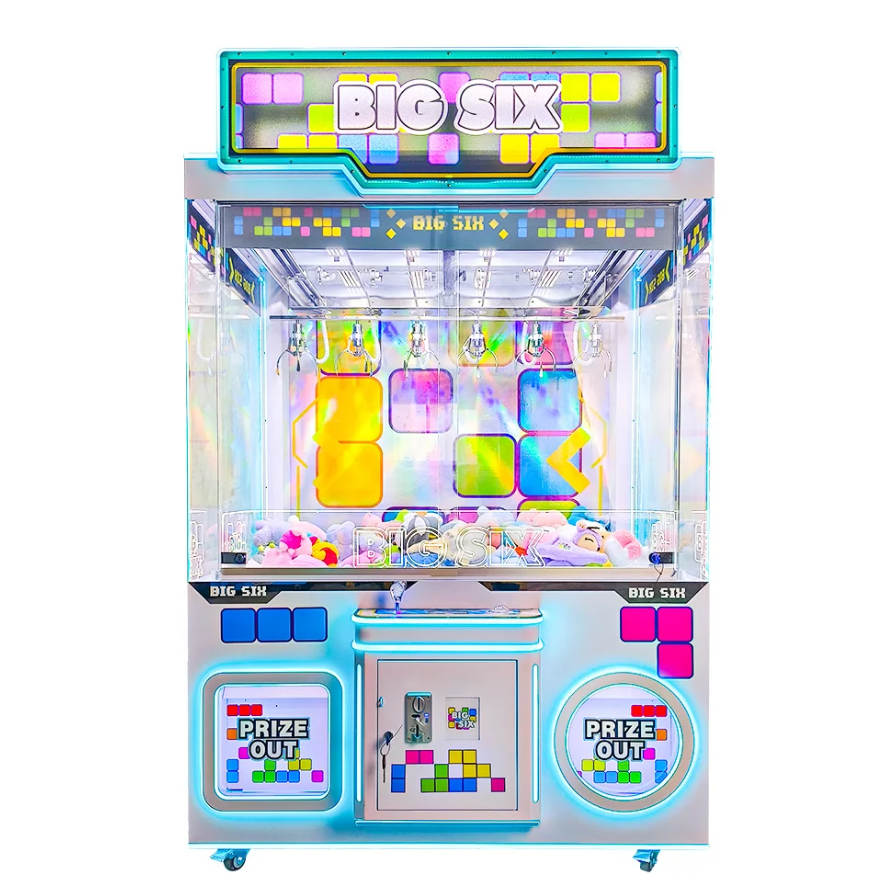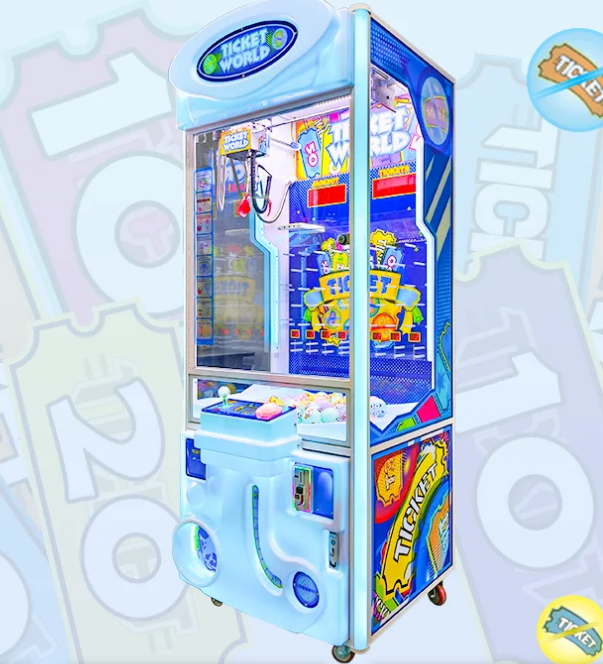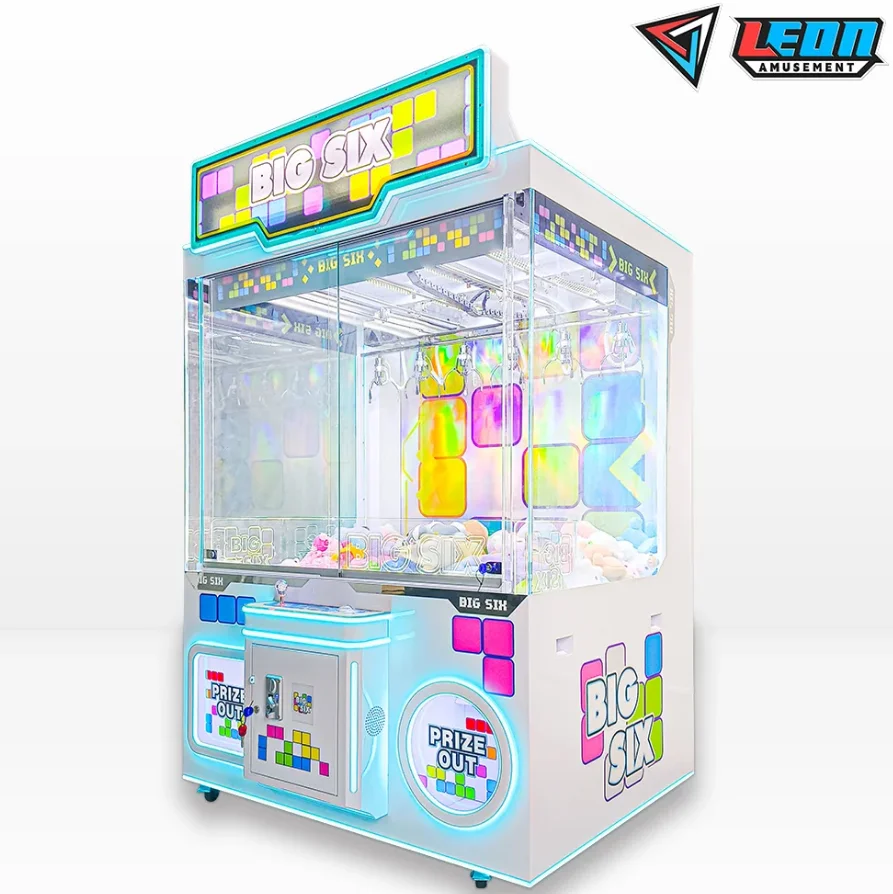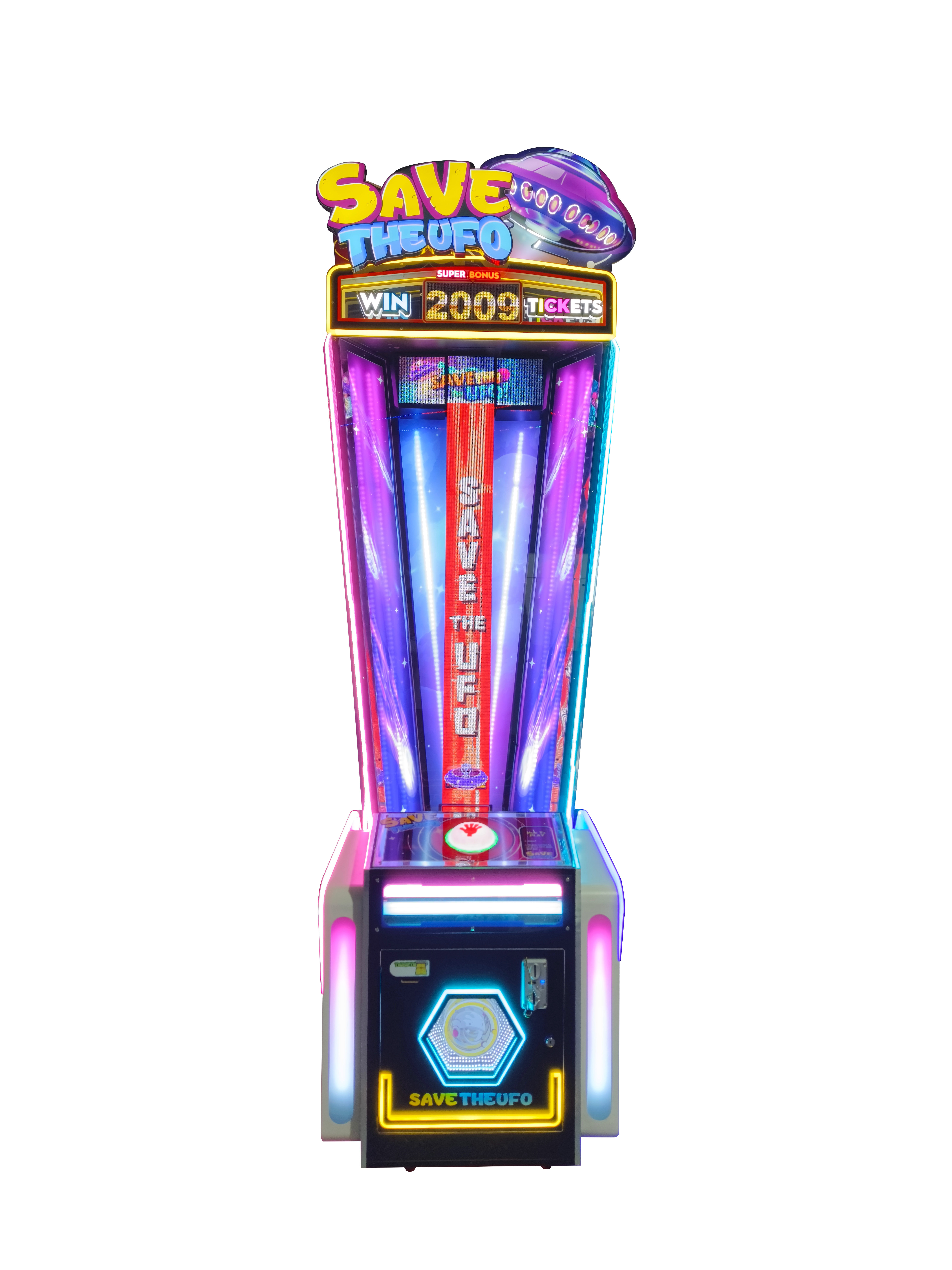When choosing a used claw machine, check dimensions (e.g., 30-40 inches wide), ensure 100-150 watt power needs match location, and confirm claw grip strength for consistent prize retrieval.
Table of Contents
ToggleCondition of the Machine
When investing in a second-hand claw machine, its condition is everything, since this directly influences user experience and the frequency of maintenance, thus affecting its longevity. Learn more on misconceptions and key aspects to consider. Checks in various areas will determine whether the machine is reliable: it goes without saying that there are mechanical parts, buttons and controls, prize drop mechanisms, and external appearances, among other critical areas to observe. Below is a closer look at certain data which can help you go through an intensive inspection.
The internal mechanics of the machine are a great place to start with the strength of the claw and the responsiveness of the joystick. Many machines allow adjustments to be made in respect to the strength of the claw, including 20% to 80% grip power that enables operators to allow prizes to be obtained easily or hardly. If you are looking at a moderate level of difficulty, using 50% in claw strength works well for most prizes weighing between 100 to 150 grams. With the selected strength level, test the claw in holding various objects of different weights. A used machine in good condition must be able easily to grab onto a 120-150 gram object with minimum slipping. This is key use because complaints of weak or loose claws are among the most common, and repairs for claw tension mechanisms range from $50 to $150 depending on parts and labor involved.
Other critical things to inspect include the buttons and joystick. On a well-serviced machine, the joystick should offer smooth, precise control, while buttons should respond immediately. A joystick under normal conditions can last for approximately 100,000 movements. Buttons can last up to 200,000 presses. A machine operating in an area which is used by many would wear out the buttons and joysticks within one or two years as well as any other machine on less busy sites, one may take four or five years without any problems occurring. Using a computer program, press each button and the joystick at least 50 times each to test consistency in their responses. Depending on quality and brand, a worn-out replacement joystick will run anywhere from $20 to $40, and replacements for buttons cost from $5 to $15 or more depending on the quality of the button. These can add up quite quickly for a machine with more than a few unresponsive buttons or a stiff joystick, so it is very important to consider these possible repairs.
Prize drop reliability is also a good indicator of the condition and remaining useful life of the machine. If testing a used claw machine, remember to bring along some small items to test the functionality of the drop mechanism. On a good-quality machine, the prize should smoothly drop in a prize chute at least 95% of the time without jamming. If the drop mechanism is poorly serviced, jams can occur perhaps 10-15% of the time; this can be frustrating for the user. Indeed, even a machine that jams only 5% of the time could, over many months of heavy use, have a significant effect on customer satisfaction and lead to regular interruptions. Repairing the prize chute mechanism, if needed, could cost from $30 to $80. It is generally a good idea to invest in a model known for low jamming rates, in case one values a hassle-free user experience.
Machine Size and Location Suitability
Standard claw machines are about 30-40 inches wide and 24-30 inches in depth, with a height of about 70-80 inches. A machine that is, for instance, 35 inches wide and 75 inches tall would fit in most arcades or game rooms with ease, as there is usually ample space between and around every game piece. However, for smaller or crowded places, such as convenience stores and cafes, a smaller version would suffice, about 24-28 inches wide. If possible, provide an area with a minimum clearance of about 12-18 inches around the machine for easy access by players without crowding around the area.
Another important factor concerning the weight of the claw machine is the fact that the relocations of the machine are quite frequent. Whereas the bigger claw machines can be from 300 to 500 pounds and would be hard to move without professional movers, the small ones run closer to around 150-250 pounds, pretty much manageable with two people. For example, a 200-pound machine can normally be transported on a heavy-duty dolly by two people, while a 500-pound machine would most likely have to either be moved with specialized equipment or professional movers. Remember that only some claw machines come with caster wheels, which enable you to easily relocate it on the same premises. However, if your place requires you to move it upstairs or down by bending or over less-than-smooth thresholds, you may want to consider setup requirements before making a purchase, as its dimensions and total weight could make this a costly and cumbersome affair to handle.
Consider the amount of power required depending on the size of the machine; large-size machines require greater output. Standard machines operated by a claw normally consume about 100 to 150 watts, though this might be higher-200 watts, for example, for larger machines featuring additional lighting or sound. If your establishment has many machines or even other machines operated at the same time, it will be prudent to check with electrical capacity because overloading the circuits can occur. For instance, two huge claw machines consuming 200 watts each in one area would require at least a 400-watt power supply, or even better, to avoid problems with other electrical appliances. If your location is underpowered, you might want to budget for additional power strips, or even consult with an electrician whether additional outlets would be needed, therefore raising setup costs.

Price Comparison and Value
The prices of second-hand claw machines can also differ radically depending on brands, condition, and features. Basic, smaller-scale types normally go on sale in the range from $500 to $1,000, while larger, feature-rich machines go well up to ranges from $1,500 to upwards of $3,000. For example, a popular used model like the Coastal Amusements “Toy Soldier” claw machine might sell for about $1,200 if it’s in good working condition, while a new model of similar size, such as the Elaut “Big Choice,” would be upwards of $2,000 used due to advanced features. For the best value, compare options among different sellers to assess whether the more expensive models offer advantages—such as a serious prize adjustment setting or better materials—that might justify a higher initial investment.
Another factor would be ongoing maintenance and repair costs over time with the particular machine under review. On average, claw machines need minor maintenance every 3-6 months and break occasionally, costing anywhere from $50 to $200 annually depending on what parts need to be replaced. For instance, a machine with less intricate mechanics, like the Smart Industries “Candy Crane,” will have generally cheaper repairs because there is less that can go wrong, whereas a high-tech model with many programmable settings, such as the “E-Claw” by Elaut, could be more expensive to fix. In practical terms, this can equate to hundreds of dollars in maintenance over a few years for a model known to be reliable with readily available replacement parts. Ask about the past maintenance record of the machine; a model that has been in the shop on several occasions may be far more expensive to fix than one that is somewhat more expensive upfront but of high quality.
Age, coupled with depreciation, is another critical factor in both price and value. Generally speaking, a claw machine will depreciate about 15-20% every year for those first five years. Using that figure, if the above machine originally retailed at $2,500, then after two years, it might be worth about $1,700 to $2,000, depending on wear and additional features added or removed. After more than five years, it can sell for less than half of its price, hence rather affordable but possibly at a higher price in repairs. Newer models are usually more expensive but offer increased features and technologies that allow for finer control over the claws or the use of LED lighting for better energy efficiency. These types of machines would contribute toward better satisfaction by players and lower energy consumption in the long run, and thus their higher initial cost may be justified because greater up-front investment leads to much greater value over time.

Availability of Spare Parts
Brand and model popularity is of course a big determining factor on this, which helps with the availability of replacement parts. Major brands, such as Coastal Amusements, Elaut, and Smart Industries, have especially good support networks and hence spare parts are fairly available. One example could be the “E-Claw” series from Elaut, which is a very popular model; most parts, such as claws, joysticks, and control boards, are easily accessible through large arcade equipment suppliers. Conversely, less-known brands or discontinued models may not have routine supplies of parts. This could lead to complex and prolonged repair processes. If you encounter a machine belonging to a minor brand, checking availability from arcade suppliers or web-based stores will be crucial in confirming that the high wear parts at least are in stock and accessible.
Cost of Replacement Parts
The cost of replacement parts is another critical factor since these costs have a tendency of building up over time. The prices of common parts for claw machines can vary widely; replacement claws, for example, might be anywhere from $30 to $100 depending on the size and quality. Another common replacement part, a joystick, would generally range from $20 to $50. Replacing a control board, which is crucial in making sure that it functions properly, costs somewhere between $100 and $200. Parts for machines like the Coastal Amusements “Toy Chest” are pretty cheap and readily available at average costs on the low side. High-tech machines with advanced electronic parts, like programmable LED lights or sound systems, may necessitate more expensive parts. These could easily be over $200 for replacement, and hence, it is very important to consider both the cost of parts and frequency of replacement in deciding on a model type.
The shipment time and availability of international suppliers will determine how quickly a spare part is obtained and how much it will cost. While some types of parts may be ordered locally, many high-demand and necessary parts have to be internationally ordered, adding both time and expense. Sometimes, it takes only 3-5 days to order a claw motor from a domestic supplier, but ordering that internationally could take anything from 2 to 4 weeks and involve an extra $20 to $50 in shipping fees. Supply chains related to popular models by Sega or Namco will give you what you need much quicker in most cases, so you spend less time in complete downtime. This may be the case with newly released models, but when it comes to obscure or older models, especially those made outside of the United States, be prepared to wait or, if they are scarce, stock up on the essentials.
Durability and Reliability
A good indication of durability is the type of materials used in the machine’s construction: the cabinet, the claw, and the insides. Generally speaking, those with metal or heavy-duty plastic cabinets, such as those by Coastal Amusements or Elaut, will be more durable and hold up much better against damage than their cheaper brethren sporting thin plastic. For example, a metal cabinet claw machine would generally resist impacts and heavy use for as many as 10 years, but with a plastic cabinet, it may show wear in 3-5 years. Additionally, the thickness and quality of the acrylic or glass that covers the prize area is a factor because a machine with 0.25-inch thick acrylic glass is far less likely to scratch or crack compared to one with 0.12-inch thick glass—especially in high-traffic areas such as arcades or family entertainment centers.
Frequency and repair cost tell more about a machine’s reliability. Therefore, those machines that have fewer parts or more simple mechanisms, such as the Smart Industries “Candy Crane,” have proven to be much more reliable and may indeed require little more than minor adjustments after a period of 6 to 12 months. Those with complex electronic systems, allowing programmable settings, like the Elaut “E-Claw,” are less reliable and may well need maintenance every month or so due to their complexity. For instance, repairing an electronic board in more complex machinery could cost $150-$300, whereas, in other models, which are simpler and may use mechanical adjustments, it would only take $20 in minor parts such as springs or screws. Thus, over a typical 5- to 10-year life span, models requiring more maintenance could rack up $500-$1,000 in repairs where simpler models might only need $200-$400. Read tips for reducing frequent repairs in these areas.
The other areas of wear and tear in durable components include the claw, joystick, and prize chute. For example, a typical standard claw is rated for about 100,000 grabs before showing any obvious signs of wear. This amounts to roughly two years in a high-traffic area and four in a low-traffic one. The joystick is another high-contact part, with a lifespan of 200,000 usages, meaning three to five years of operation before replacement needs to be considered. Machines with hardier joysticks and an armored claw mechanism—such as those by Sega or Namco—were generally more competent in a commercial environment. However, if within a mere six months, a claw on the machine starts to slide off, it either means the quality of that claw was highly inferior when fitted or it is wearing off at a very high rate. This reflects worse general durability: it can start at anything between $30 and $100 dollars to replace a claw; such costs add up when numerous replacements are done.
Ease of Setup and Maintenance
Setup requirements at the beginning for a claw machine vary tremendously, depending on the machine’s size and complexity. Basic models, such as the Smart Industries “Candy Crane,” may require only a single standard 120V power outlet and can be set up with two people in 30-45 minutes. The larger, higher-tech models, such as the Elaut “E-Claw,” will require more outlets or even separate adapters for power, particularly those with intricate lighting or sound that requires more voltage. For example, certain higher-voltage machines could be an upgrade to your circuit, adding $100-200 to the cost of set-up. Checking setup needs beforehand is crucial to avoid electrical issues. A machine that can be easily set up is one that is not going to have many of these needs but instead can be put together simply using standard or basic tools.
The other aspect for easy maintenance is accessibility to the internal parts. Accessibility involves those internal parts that are needed or targeted in the machine that, if easily accessible and quick to access, like the Coastal Amusements “Toy Chest,” usually is favorable concerning ease of maintenance. For instance, the front-open cabinet with slide-out trays allows easy access to the claw motor, control board, and prize chute. This greatly reduces maintenance time. What could take 10-15 minutes in minor repairs, such as claw recalibration or cleaning of the joystick in machines whose components are more accessible, may take as long as 30-45 minutes with those tightly packed machines or whose accesses are available from the rear. On some machines, the access panels are tool-free, and components of parts may quick-release to expedite maintenance and avoid accidents that may lead to further damage when a repair is in process.
Frequency of routine maintenance is another factor that influences the convenience of operating a claw machine. Good quality machines generally need routine maintenance every three to six months to maintain good quality of components, whereas those machines of lesser quality or involving more complex mechanisms need monthly checks. For example, with an Elaut model offering adjustable claw strength and prize sensors, monthly calibration would be necessary to keep those settings just right. Less complicated models, like the Sega “UFO Catcher” with fewer user-adjustable settings, may not require major adjustments for a half-year or longer. Basic supplies that are needed at routine checks, like lubrication for the moving parts, testing the strength of the claw, and cleaning within the prize area, usually run around $20 to $30 per session. If this does not get done, it could lead to more breakdowns at higher costs of repair.
Appeal to Target Audience
The theme of the claw machine also acts as an important means of gaining the attention of different age groups. For example, machines with lively-colored cartoon-like designs and LED lights generally gain attention from children and families, hence suitable for locations like family entertainments and amusement parks. Certain possible popular themes can be animals, toys, and fantastic characters. Simultaneously, it captures the eyes of older teenagers and adults in bars or malls with its sleek and minimalist design, with colors that are predominantly black or metallic. This LED-lit machine can raise volumes 20-30% higher than their non-lit counterparts in places where children frequent due to visual excitement from the lights. Understanding audience preferences helps you pick a theme that resonates, potentially doubling interaction and making the machine the centerpiece of your location.
Prize selection and customization is also another key consideration in trying to reach a wide target audience. A claw machine prepped with plush toys or popular character themes, such as Marvel or Disney items, generally tends to attract children or young teenagers. That is to say, one plush toy prize could cost from $1 to $3 at wholesale and can produce multiple plays per session. For a teenage or adult audience, prizes of greater value or of a trendier type, such as electronics or collectibles, may be in order. Smaller electronics, like earbuds or portable chargers, may be pretty low-cost items, say in a range from $5 to $10 each, but induce higher attempt frequencies because the user has a Willingness-to-Pay more to win high-value items. Prize choice can greatly increase play frequency by 25 to 50%, depending on perceived prize value, making prize customization a powerful tool to gain and retain your target audience.
Difficulty and payout settings are crucial to balancing user enjoyment and machine profitability. Newer claw machine models feature adjustable strength of claws and frequency of payout, thus allowing operators to adjust the difficulty level according to demographic targets. For younger children, it is advisable to set the difficulty level slightly easier for increased satisfaction and repeated playing. In contrast, a machine set to pay once in every five games will keep the attention of kids longer, while a more challenging setting, like a 1 in 15 or 1 in 20 payout ratio, would be better suited for teenagers or adults who enjoy overcoming difficult odds as it creates satisfaction and a sense of achievement upon winning. The difficulty level can thus be adjusted to suit and appeal to the audience in question, helping increase user engagement and providing a steady flow of returns without causing frustration.








